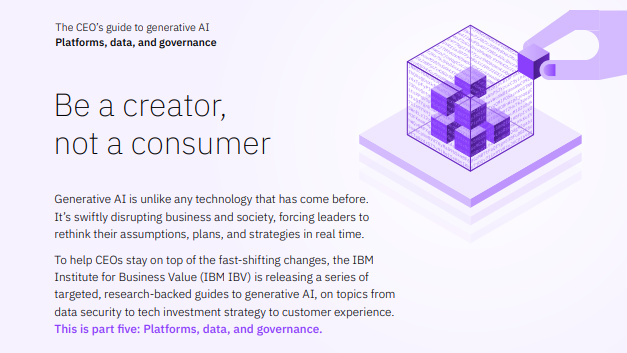Automotive data management market poised to reach $4,807m by 2030
North America is anticipated to hold the largest share of the market over the forecast period

The global automotive data management market size is projected to reach $4,807 million by 2030, according to a recently published report by Acumen Research and Consulting (ARC).
The market research firm estimates a compound annual growth rate (CAGR) exceeding 20.5% over the forecast period beginning 2022 through 2030.
RELATED RESOURCE

Unlocking the value of data with data innovation acceleration
Diving into what a mature data innovation practice looks like
“Previously limited to marketing and sales, data analytics is now being used in product development, industrial processes, logistics, and aftermarket solutions.”
“However, the increasing use of connected vehicles is increasing the demand for automotive data management. The growing usage of embedded sensors in self-driving automobiles is driving the automotive data management market forward,” explained ARC.
The firm also affirmed, “automotive sector confronts strong competition, and fresh developments are required to stay competitive.”
Acerta Analytics Solutions, Caruso GmbH, AMO Foundation, Amodo D.o.o, AWS, and IBM are among the key vendors influencing the automotive data management industry.
By region, North America is anticipated to hold the majority of the global automotive data management market share during the forecast period, due to a large number of automakers in this region, along with the widespread implementation of lean analytics and deep learning.
Get the ITPro daily newsletter
Sign up today and you will receive a free copy of our Future Focus 2025 report - the leading guidance on AI, cybersecurity and other IT challenges as per 700+ senior executives
In the next few years, analysts expect Europe to be the second-largest market for automotive data management. The region's share of the market is predicted to grow exponentially as a result of increased car production, advancements in vehicle electronics layout, connected automobiles, V2V & V2I innovations, and the expansion of key OEMs.
“The increased demand for built-in informatics and telematics in automotive has resulted in advancements in technology aimed at improving the entire in-vehicle experience for both passengers and drivers. With the connected vehicle, ubiquitous inbuilt cellular connections provide new opportunities to educate and engage drivers, as well as service the vehicles throughout their existence,” stated ARC in its report.
-
 Westcon-Comstor and Vectra AI launch brace of new channel initiatives
Westcon-Comstor and Vectra AI launch brace of new channel initiativesNews Westcon-Comstor and Vectra AI have announced the launch of two new channel growth initiatives focused on the managed security service provider (MSSP) space and AWS Marketplace.
By Daniel Todd Published
-
 Third time lucky? Microsoft finally begins roll-out of controversial Recall feature
Third time lucky? Microsoft finally begins roll-out of controversial Recall featureNews The Windows Recall feature has been plagued by setbacks and backlash from security professionals
By Emma Woollacott Published
-
 Can robots work safely alongside humans? This one industry leader thinks we're not far away
Can robots work safely alongside humans? This one industry leader thinks we're not far awayNews Humanoid robots and people will be able to work truly side-by-side this year, according to the CEO of one leading robotics company.
By Nicole Kobie Published
-
 Empowering enterprises with AI: Entering the era of choice
Empowering enterprises with AI: Entering the era of choicewhitepaper How High Performance Computing (HPC) is making great ideas greater, bringing out their boundless potential, and driving innovation forward
By ITPro Last updated
-
 The power of AI & automation: Proactive IT
The power of AI & automation: Proactive ITWhitepaper Automation strategies to dynamically and continuously assure cost-effective application performance
By ITPro Published
-
 The CEO's guide to generative AI: Be a creator, not a consumer
The CEO's guide to generative AI: Be a creator, not a consumerWhitepaper Innovate your business model with modern IT architecture, and the principles of trustworthy AI
By ITPro Published
-
 Magic Quadrant for enterprise conversational AI platforms
Magic Quadrant for enterprise conversational AI platformsWhitepaper An evaluation of the conversational AI platform (chatbot) market
By ITPro Last updated
-
 Learning and operating Presto
Learning and operating Prestowhitepaper Meet your team’s warehouse and lakehouse infrastructure needs
By ITPro Published
-
 Scale AI workloads: An open data lakehouse approach
Scale AI workloads: An open data lakehouse approachwhitepaper Combine the advantages of data warehouses and data lakes within a new managed cloud service
By ITPro Published
-
 Managing data for AI and analytics at scale with an Open Data Lakehouse approach
Managing data for AI and analytics at scale with an Open Data Lakehouse approachwhitepaper Discover a fit-for-purpose data store to scale AI workloads
By ITPro Published